Themed collection Metal Toxicity

Front cover
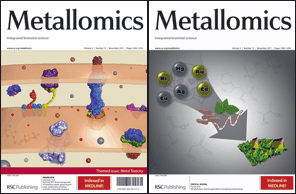
Inside front cover
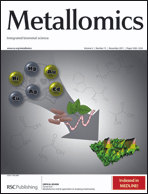
Contents list
Metal toxicity
This editorial introduces the Metal Toxicity themed issue, guest edited by Gregor Grass (left) and Christopher Rensing (right).

Metallomics, 2011,3, 1095-1097
https://doi.org/10.1039/C1MT90048J
Copper toxicity and the origin of bacterial resistance—new insights and applications
The development of copper resistance is put into an evolutionary context. Possible use of copper in innate immunity and protozoan predation is also discussed. Finally, the antimicrobial properties of copper surfaces are summarized.
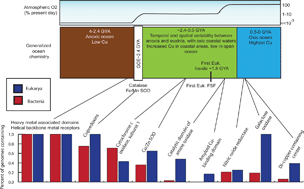
Metallomics, 2011,3, 1109-1118
https://doi.org/10.1039/C1MT00107H
Genetic and epigenetic effects of environmental arsenicals
Environmental arsenicals and their methylated metabolites have the capacity to induce genome destabilizing and epigenetic effects in cells and in vivo.

Metallomics, 2011,3, 1135-1141
https://doi.org/10.1039/C1MT00074H
Cobalt stress in Escherichia coli and Salmonella enterica: molecular bases for toxicity and resistance
A speculative graphical abstract of how Co2+ ions could exert their toxic effect in interfering with Fe-S cluster biogenesis.

Metallomics, 2011,3, 1130-1134
https://doi.org/10.1039/C1MT00099C
Bacterial ATP-driven transporters of transition metals: physiological roles , mechanisms of action, and roles in bacterial virulence
This review highlights the structural, mechanistic, and physiological differences between the two super-families of ATP-driven transition metal transport systems.
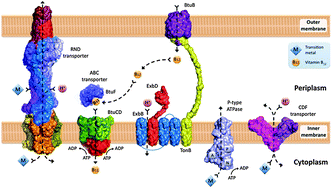
Metallomics, 2011,3, 1098-1108
https://doi.org/10.1039/C1MT00073J
Chromate toxicity and the role of sulfur
We discuss how Cr exposure causes sulfur depletion in cells and that this may underpin key aspects of Cr toxicity.
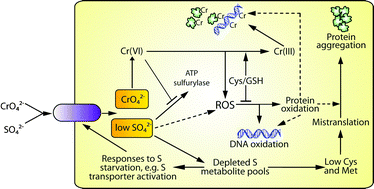
Metallomics, 2011,3, 1119-1123
https://doi.org/10.1039/C1MT00059D
The oxidative stress of zinc deficiency
This minireview describes the possible sources of oxidative stress in zinc-limited cells and mechanisms cells use to overcome that stress.
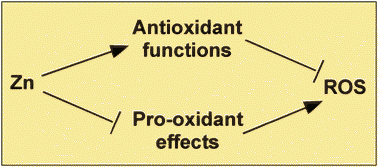
Metallomics, 2011,3, 1124-1129
https://doi.org/10.1039/C1MT00064K
Metabolomics and its application to studying metal toxicity
This review explores the use of metabolomics to study metal toxicity, an unexplored topic in the literature.

Metallomics, 2011,3, 1142-1152
https://doi.org/10.1039/C1MT00070E
Role of metal ions in aggregation of intrinsically disordered proteins in neurodegenerative diseases
Pathogenesis of several neurodegenerative diseases is associated with intrinsically disordered proteins that interact with metals, misfold, and aggregate.

Metallomics, 2011,3, 1163-1180
https://doi.org/10.1039/C1MT00106J
Toxic elements in tobacco and in cigarette smoke: inflammation and sensitization
This review summarizes available evidence related to selected health risks from metals or metalloid exposures from particulate inhalation and oral exposure.

Metallomics, 2011,3, 1181-1198
https://doi.org/10.1039/C1MT00066G
Mechanisms of nickel toxicity in microorganisms
Nickel inhibits microbial enzymes (substituting for the normal metal or binding to catalytic/secondary sites) and indirectly creates reactive oxygen species.
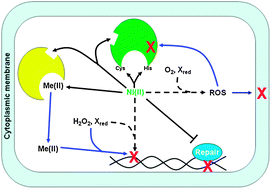
Metallomics, 2011,3, 1153-1162
https://doi.org/10.1039/C1MT00063B
The chemical forms of mercury and selenium in whale skeletal muscle
X-ray absorption spectroscopy is used to investigate the comparative chemical forms of mercury and selenium in fish and whale skeletal muscle.
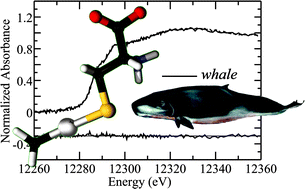
Metallomics, 2011,3, 1232-1237
https://doi.org/10.1039/C1MT00077B
The C2H2 zinc finger transcription factors are likely targets for Ni(II) toxicity
C2H2 zinc fingers of many transcription factors are susceptible to hydrolytic damage by Ni(II) ions without Zn(II) displacement.
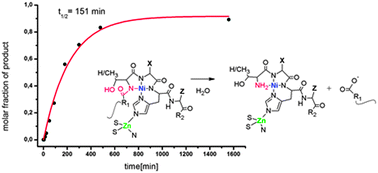
Metallomics, 2011,3, 1227-1231
https://doi.org/10.1039/C1MT00081K
Modeling the cellular impact of nanoshell -based biosensors using mouse alveolar macrophage cultures
Investigation into the toxicity of gold-silica nanoshells based on changes to surface chemistry, dose time, and concentration using macrophage cells.
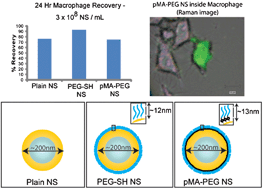
Metallomics, 2011,3, 1218-1226
https://doi.org/10.1039/C1MT00089F
Zinc, cadmium and nickel increase the activation of NF-κB and the release of cytokines from THP-1 monocytic cells
Zinc, nickel and cadmium have a pro-inflammatory effect on THP-1 monocytic cells.
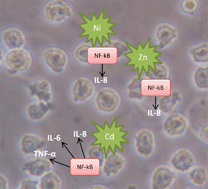
Metallomics, 2011,3, 1238-1243
https://doi.org/10.1039/C1MT00050K
Evaluation of cellular influences of platinum nanoparticles by stable medium dispersion
Compared with soluble platinum compounds, cellular influences of physically and chemically inactive platinum nanoparticles were small.
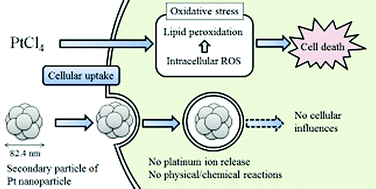
Metallomics, 2011,3, 1244-1252
https://doi.org/10.1039/C1MT00060H
Responses of human cells to ZnO nanoparticles : a gene transcription study
NanoZnO contact elicits a unfolded protein transcriptional response compared to inert nanoTiO2.
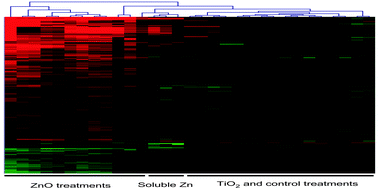
Metallomics, 2011,3, 1199-1211
https://doi.org/10.1039/C1MT00061F
Development of highly effective three-component cytoprotective adjuncts for cisplatin cancer treatment: synthesis and in vivo evaluation in S180-bearing mice
A co-administration regimen of cisplatin plus N-glucosyl-N-dithiocarbamateamino acid disodium compounds was explored and has been shown to improve the therapy of S180-bearing mice for the first time.
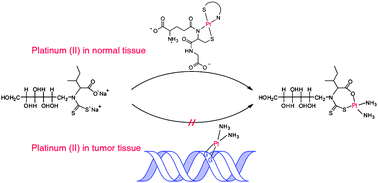
Metallomics, 2011,3, 1212-1217
https://doi.org/10.1039/C1MT00013F
About this collection
Guest Edited by Chris Rensing of the University of Arizona and Gregor Grass of the Bundeswehr Institute of Microbiology, this issue contains a collection of reviews and research papers highlighting an important aspect of metal biology.